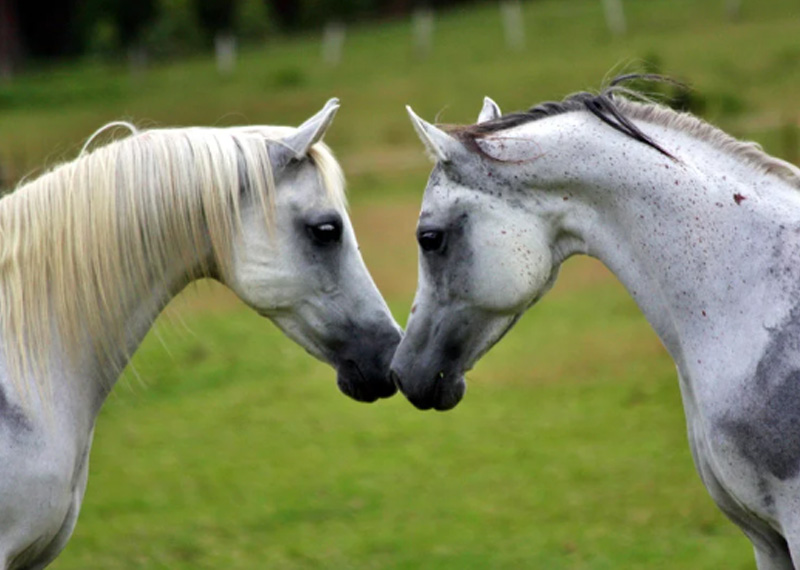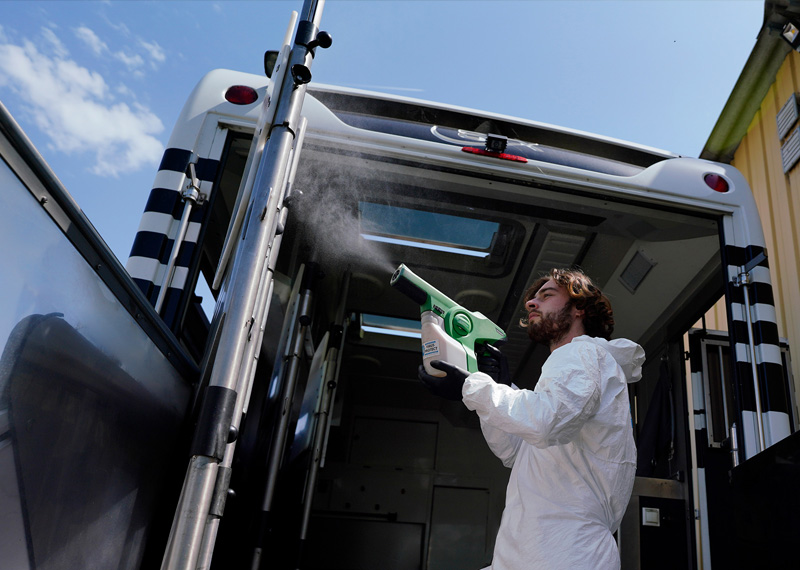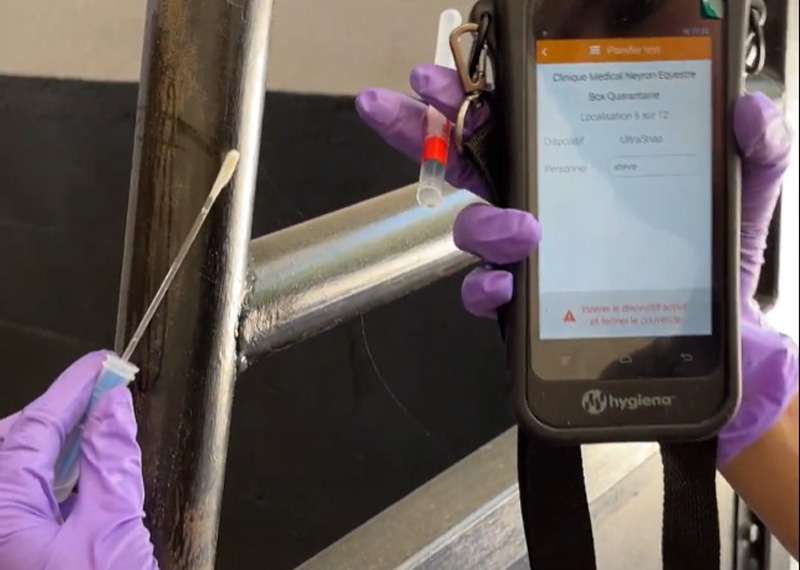why disinfect ?
As an organizer, stable renter, or hosting facility, you have an obligation to ensure the health safety of horses participating in events and to stem at the source any risk of disease spread.
The challenges of disinfection in the equestrian environment during competitions are complex and multifaceted, mainly due to the high density of animals present, constant movement of horses and people, and shared use of equipment and facilities. Here are the main challenges:
Rapid Spread of Diseases: Competitions bring together a large number of horses from different regions, increasing the risk of spreading infectious diseases. Close proximity facilitates the quick transmission of pathogens through direct contact between horses or indirect contact via the contaminated environment.
Facility Management: Equestrian facilities used during competitions, such as stables, wash areas, and communal spaces, can become hotspots for disease transmission if not properly disinfected. Effective disinfection of these areas is crucial but can be challenging due to their large size and intensive use during events.
Shared Equipment: The shared use of equipment such as saddles, bridles, and water buckets can facilitate disease transmission if these items are not properly cleaned and disinfected between uses.
Movement Control: Managing the movements of horses and people around competition sites is challenging. Without proper controls, sick horses or those carrying pathogens can easily spread diseases to other healthy horses.
Lack of Awareness and Training: A lack of awareness and training among participants and staff regarding best disinfection practices can lead to gaps in disease prevention measures.
Resistance to Disinfectants: Excessive or inappropriate use of disinfectants can lead to pathogen resistance, making disinfection efforts less effective.
Logistics and Cost: Implementing comprehensive disinfection protocols can be logistically complex and costly, especially for large events.
The rhinopneumonia crisis in France in 2018
The 2018 equine rhinopneumonitis crisis had significant repercussions on the equestrian sector in France, leading to increased awareness of the importance of preventing and controlling infectious diseases in this community.
The crisis resulted in estimated losses of 5 million euros for various stakeholders in the French equestrian sector. These losses included veterinary costs, income losses due to the cancellation or postponement of competitions, and costs related to quarantining affected establishments.
This not only affected the revenue generated by these events but also impacted the preparation and performance of the athletes and horses involved.
How PhotoACTIVE Equine can help you
PhotoACTIVE Equine can play a key role in mitigating the challenges associated with disinfection in the equestrian environment during competitions, offering several benefits to professionals in the sector. Here’s how this solution can help:
- Preventing Disease Spread: With its powerful antimicrobial properties, PhotoACTIVE Equine can effectively eliminate pathogens on surfaces in contact with horses, thus reducing the risk of infectious disease transmission via indirect contact.
- Ease of Application and Durability: Unlike traditional disinfectants that require frequent applications, PhotoACTIVE Equine provides lasting protection, meaning that once applied, it continues to act against pathogens over an extended period. This can be particularly beneficial during competitions, where time and resources for ongoing disinfection may be limited.
- Safety and Non-toxicity: Since PhotoACTIVE Equine has passed all the necessary veterinary approvals, professionals can be assured of its safe use around horses, staff, and visitors, which is crucial in an environment where health safety is a priority.
- Cost and Labor Reduction: By reducing the frequency of disinfectant applications needed due to its long-lasting action, PhotoACTIVE Equine can help lower costs related to disinfection supplies and labor, making the management of biosecurity measures more efficient and economical.
- Adaptability: PhotoACTIVE Equine is designed for use on a variety of surfaces, including areas that are difficult to clean and disinfect effectively with traditional methods. This makes it an ideal solution for the complex environments of equestrian competitions, where shared equipment and facilities are common.
- Enhanced Reputation: By adopting an advanced disinfection solution like PhotoACTIVE Equine, competition organizers and equestrian facility owners can demonstrate their commitment to the health and well-being of horses, thereby strengthening their reputation among participants, sponsors, and the public.
In summary, PhotoACTIVE Equine offers an innovative and effective approach to addressing the disinfection challenges in the equestrian environment, contributing to the health and safety of horses as well as the success of competitions.




